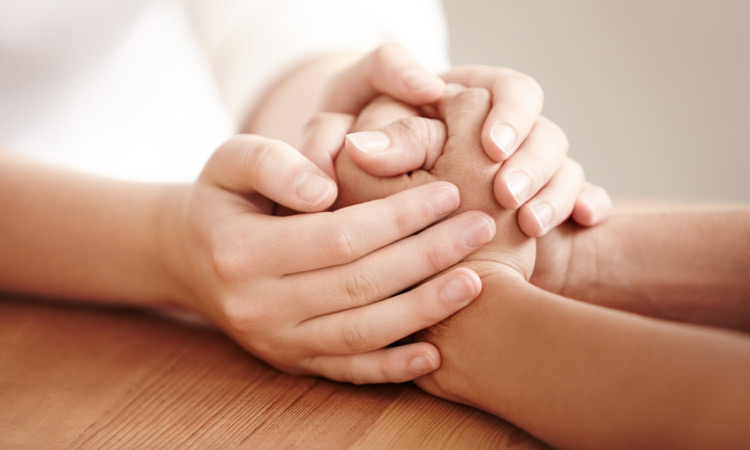 This is the season of festivals, gift giving and joy. But it’s not a jolly time for everyone. Seasonal affective disorder (SAD) can make winter holidays unbearable for people suffering from its symptoms, and can even lead to suicide. While SAD has effective treatments, suicide prevention information is also included.
This is the season of festivals, gift giving and joy. But it’s not a jolly time for everyone. Seasonal affective disorder (SAD) can make winter holidays unbearable for people suffering from its symptoms, and can even lead to suicide. While SAD has effective treatments, suicide prevention information is also included.
SAD and depression during the holidays
SAD is a mood disorder found in people sensitive to light, according to Dr. Christine Moutier, Chief Medical Officer of the American Foundation of Suicide Prevention. In winter months, we receive less intense light for fewer hours per day—except near the equator. In the Northern Hemisphere, winter coincides with many holidays.
Moutier told Rewire Me, “The holidays drive homo sapiens’ sense of isolation when we’re not connected with family and friends.”
 Dr. Elisha Goldstein, author of Uncovering Happiness: Overcoming Depression with Mindfulness and Self-Compassion, elaborates: “There is nothing more threatening to human beings than disconnection. The brain need emotional connection, and our culture highlights connections.”
Dr. Elisha Goldstein, author of Uncovering Happiness: Overcoming Depression with Mindfulness and Self-Compassion, elaborates: “There is nothing more threatening to human beings than disconnection. The brain need emotional connection, and our culture highlights connections.”
Treating SAD
Goldstein treats SAD, a specific type of depression, with “five natural antidepressants”: mindfulness, self-compassion, compassion, play and having a learning mindset.
“Fuel for depression is often based on negative thoughts about ourselves, which loop us into patterns of feeling heavy, not wanting to leave the house and avoiding people,” he told Rewire Me during an interview.
“Mindfulness allows us to connect with the body, dial down the storytelling in the mind and give us a snapshot of the bigger picture, long enough to realize, ‘I don’t need to do these unhealthy habits.’”
During the holidays, “Focus on what’s good and what you’re grateful for. Visualize those things, how they feel in your body. Linger on them. This deeper gratitude practice affects deeper parts of your brain, not just cognitive levels,” Goldstein says.
“Mindfulness is a foundation for working with depression, but not the end of the story.” People may feel more hopeless if they are not able to achieve mindfulness.
Goldstein also helps clients avoid negative self-talk, self-loathing and shame through explicit acts of self-compassion. When you recognize you’re suffering, act intentionally to care for yourself by reaching out to a friend or taking a bath because you need basic love and kindness.
Planning and preparation can also be helpful if you find holidays difficult. Put supports in place, Goldstein suggests—like alcoholics do when going to a party. Take walks outside. Light therapy is particularly effective.
We can also turn our focus to compassion for others. Goldstein says, “I ask clients to think about ‘What matters to me in the world? What actions can I bring in line with my values? Am I doing something with people who are suffering?’ I help clients make an action plan and build muscle for their purpose in the world.” Studies show helping others benefits the giver, for example, decreasing depression.
Goldstein gets a blank face when he asks clients with depression about their play habits; he helps them rediscover playing. Similarly, the learning mindset helps combat the “rigidity” that comes with depression.
Being flexible and open to novelty help combat depression, Goldstein says. “Life obstacles are inevitable. We’re going to stumble and get caught in the depression loop. But asking, ‘What can I learn from this? Being grateful for what’s good and for what’s difficult’” helps people cope with SAD.
 Preventing suicide
Preventing suicide
Moutier says people with SAD are highly treatable, but still can be at risk for suicide. “More than 90% of people who die by suicide—even if they were never aware of it—had a mental health condition.”
The AFSP lists warning signs for someone at risk for suicide, such as withdrawal, recklessness and depression.
It’s important to ask directly about suicidal thoughts. Moutier suggests saying, “I’m a safe person to talk to, and if you’re having thoughts of ending your life, I’d like to know what that’s like for you.”
If there’s an imminent risk, do not leave the person alone. Check for firearms, other weapons, alcohol, drugs, other dangerous objects, and call National Suicide Prevention Lifeline—800-273-TALK (8255) or 911. Follow up.
Sometimes there’s chronic concern for someone who meets multiple risk factors, but we can’t stay with them. You can say, “As your friend, I would respect you if you saw a mental health professional.”
Making a future date together can be powerful because the person may have distorted views about themselves, says Moutier. “But never try to solve or minimize their problem, or debate the value of life.”
If you’re considering harming yourself, the AFSP advises, “Treat yourself like you would treat someone else who needs your help.” Tell your doctor, seek mental health treatment or call the National Suicide Prevention Lifeline.
For those with SAD, the holidays will pass, winter will eventually thaw, and help is always near if we reach for it.
Click here to find out about Rose’s thoughts on wellbeing and health


